‘Thought I Left My Daughter With No Father’: 9/11 Survivor Who Opted to Help Rescuers in Twin Towers
05:00 GMT 11.09.2021 (Updated: 20:46 GMT 19.10.2022)

© Photo : Bill Biggart
Subscribe
Tuesday, 11 September 2001, became a pivotal day for America as the nation faced the deadliest terror attack in history, with al-Qaeda members hijacking four passenger planes to commit it. A former Morgan Stanley executive, who was in the World Trade Center that day and managed to survive, recalls his experience in an interview with Sputnik.
It was an ordinary sunny morning in New York City, when Greg Amira, a vice-president of Morgan Stanley at the time, was going to work on the 73rd floor of the World Trade Center's South Tower on 11 September 2001. The World Trade Center, a large complex of seven buildings in the financial heart of Lower Manhattan, hosted about 17,000 workers, who, like Amira, commuted to their jobs that day.
The situation changed in the blink of an eye at 8:46 am, when an American Airlines plane carrying 76 passengers and 11 crew members, suddenly crashed into the North Tower.
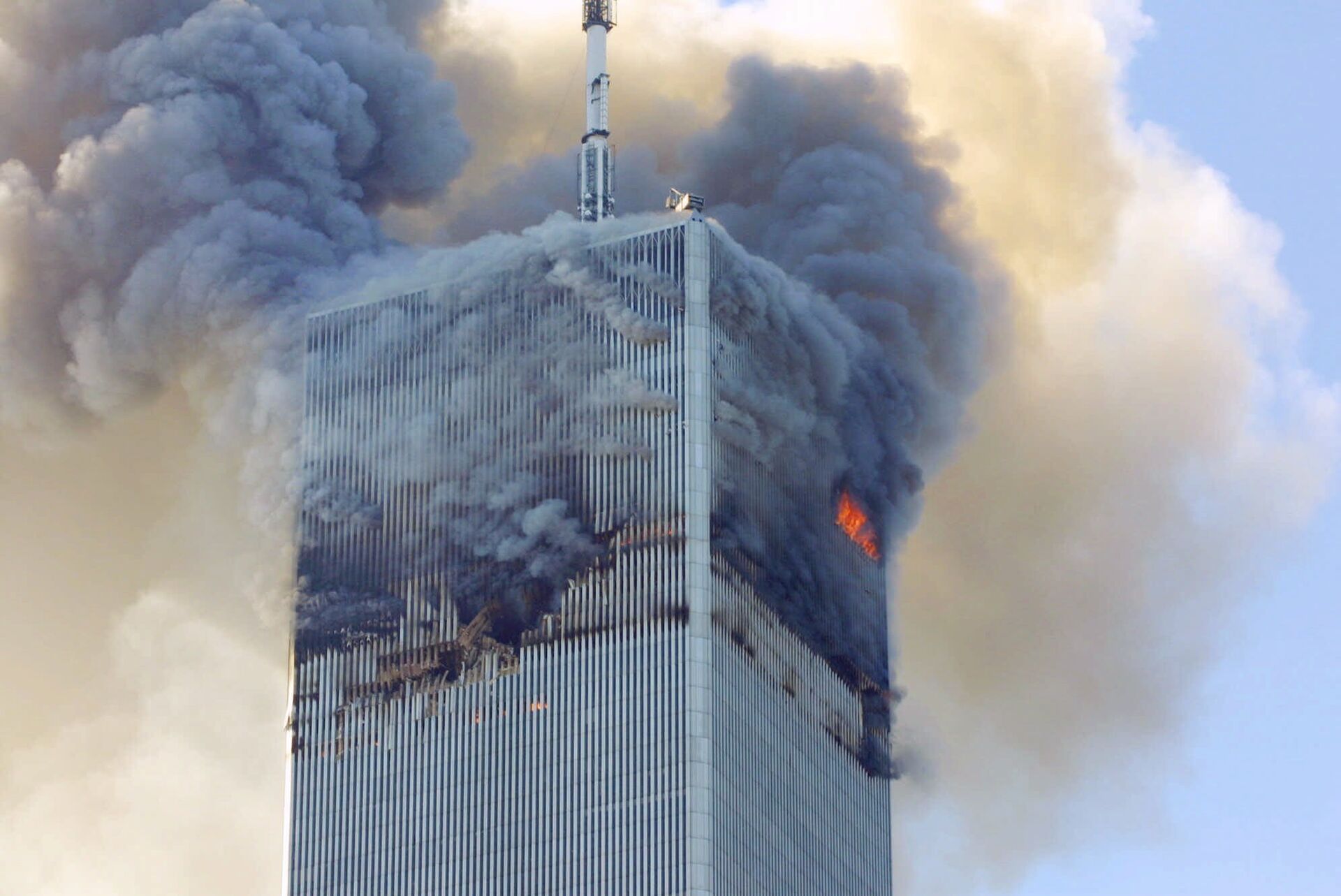
Fire and smoke billows from the north tower of New York's World Trade Center Tuesday Sept. 11, 2001 after terrorists crashed two hijacked airliners into the World Trade Center and brought down the twin 110-story towers.
© AP Photo / David Karp
"I was on my way into work that day when the first tower was hit," Amira recalls. "There was initially some confusion about whether to evacuate or not and then quickly they came back on the loudspeakers and asked us to evacuate the building."
Amira quickly went down the staircase of the South Tower, not knowing what was going on. When the man was somewhere in the low teens, the building was hit by a second plane that crashed into the South Tower at 9:03 am. Amira called his wife trying to find out what was happening but the phone line was dead.
"The Port Authority security was actually very good in that they kept everybody within the building and exiting out of the East side of the complex over by the Millennium Hotel because of falling debris and I guess for other reasons," the 9/11 survivor says. "But when I initially came out, I looked up and I saw the fire much higher up. I thought the explosions had gone off."
However, when he saw seriously injured people coming out of the North Tower he rushed to the rescue instead of trying to save his own life. Amira explains his sudden decision which nearly cost him his life by his military background. Perhaps, the fact that his father served in the New York City Police Department for over 30 years also influenced his choice. "So it's kind of like in your blood, I'll say, to run towards a catastrophe, not away," the survivor says.
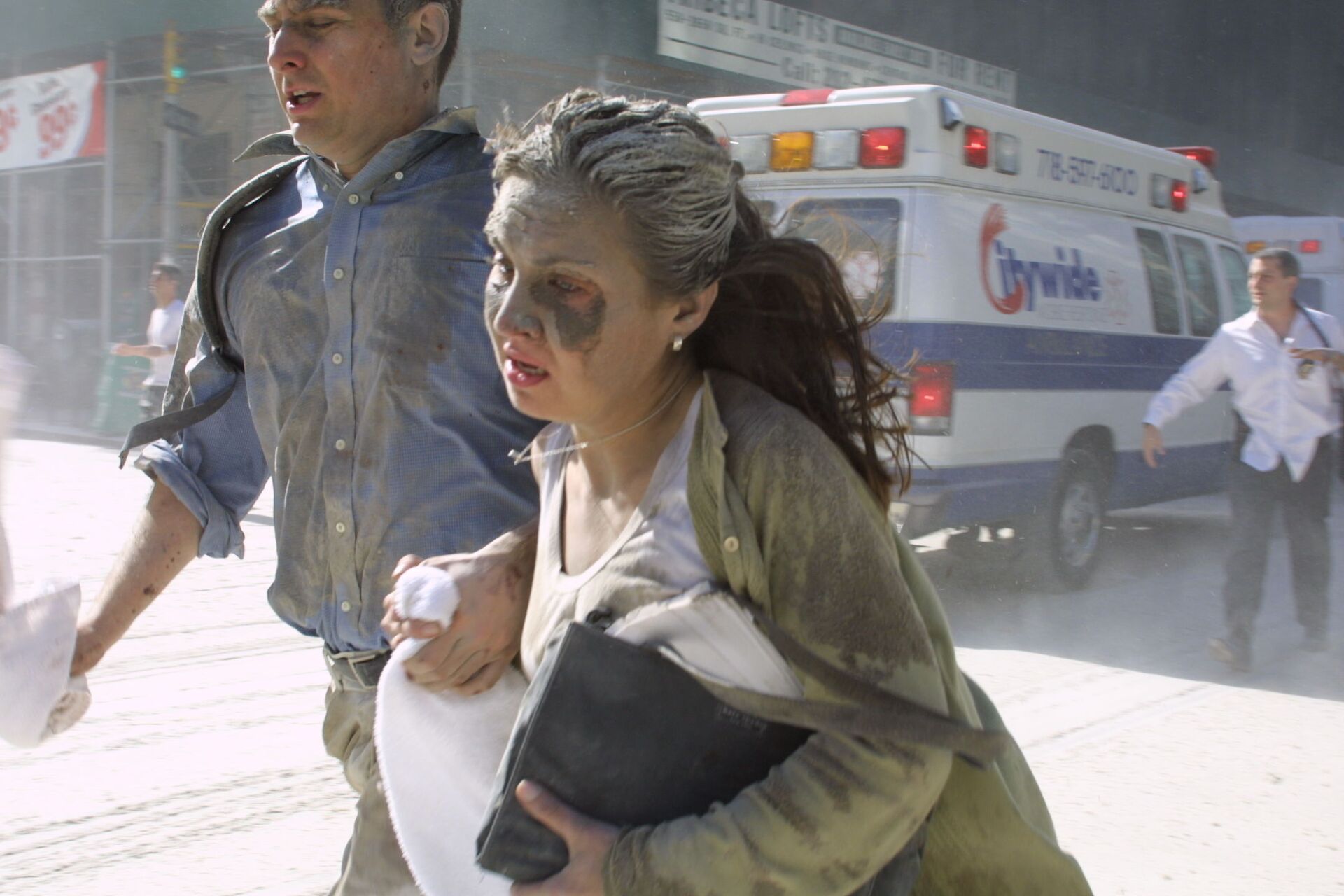
People flee the scene near New York's World Trade Center after terrorists crashed two planes into the towers on Tuesday, September 11, 2001.
© AP Photo / Diane Bondareff
"Against the will of many of my coworkers, I went back inside, made my way to the lobby number one, it seemed that's where most of the injured were coming from," he recalls.
Amira offered his help to firemen in the lobby of the North Tower. He was still working there when he heard a loud rumble that then got louder. The man quickly hit the ground in a spread-eagle fashion thinking a blast was coming "from either incoming artillery or a grenade or whatever." Apparently, it was military training that guided his instincts again at this moment, according to him.
It appears that this manoeuvre saved him when the glass shattered and then blew out accompanied by a burst of flames.
"My initial thought, in my head is I'm dead, I'm an idiot, I'm leaving my daughter without her father. You know, why am I here? This is not my job," the survivor recalls.
Amira regained consciousness when a fireman started shaking him to get out. The fireman helped the man rise to his feet and said: "We need to get out of here. How do we get out of here?" It was hard to see anything because of the cloud of dust hanging in the air and it took a few minutes before it started to settle.
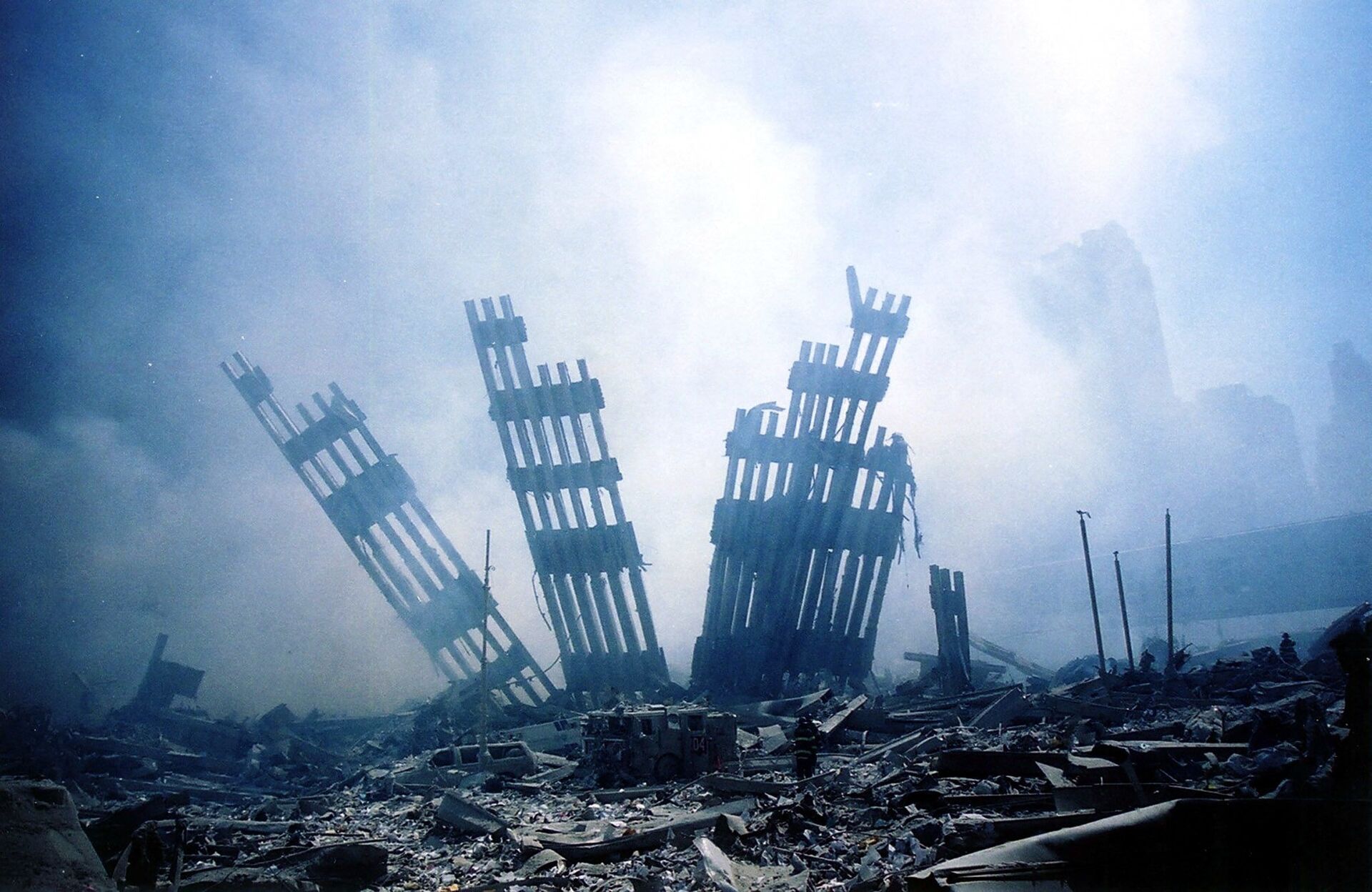
In this file photo the rubble of the twin towers of the World Trade Center smoulder following a terrorist attack in lower Manhattan, New York on September 11, 2001.
© AFP 2023 / ALEXANDRE FUCHS
The upper part of the lobby was three stories in height and the sunlight was coming through and soon they were able to make out a clear passage around a much higher ceiling area of the lobby.
"We started to make our way in that direction. As we did, there were loads of bodies on the ground," Amira says.
Again, from his military training and from what his father showed him when he was younger, Amira immediately went to check the pulse on the neck of those lying on the floor. But the fireman stopped him saying: "There's no time for that – flick them in the eye and if they don't move, keep going." Alas, nobody was left alive.
Once Amira got closer to the West Side Highway – the outer part of the North Tower building – he realised that he almost couldn't breathe: he had a lot of debris in his mouth and all over his body.
"Let's get out of here," the fireman rushed him. The next few moments will stay in Amira's memory forever.
"We stepped out through what would have been the ground floor windows of the lobby into the West Side Highway area," he says. "And that's when the famous photograph was taken of me by the photographer Bill Biggart. It turned out to be one of the last pictures he took. He was taking photographs and didn't realise he was at the base of the building as it fell."
The falling building trapped Amira, the fireman who saved him, and the photographer. The only survivor was Amira, who, badly injured, was later dug out of the rubble.
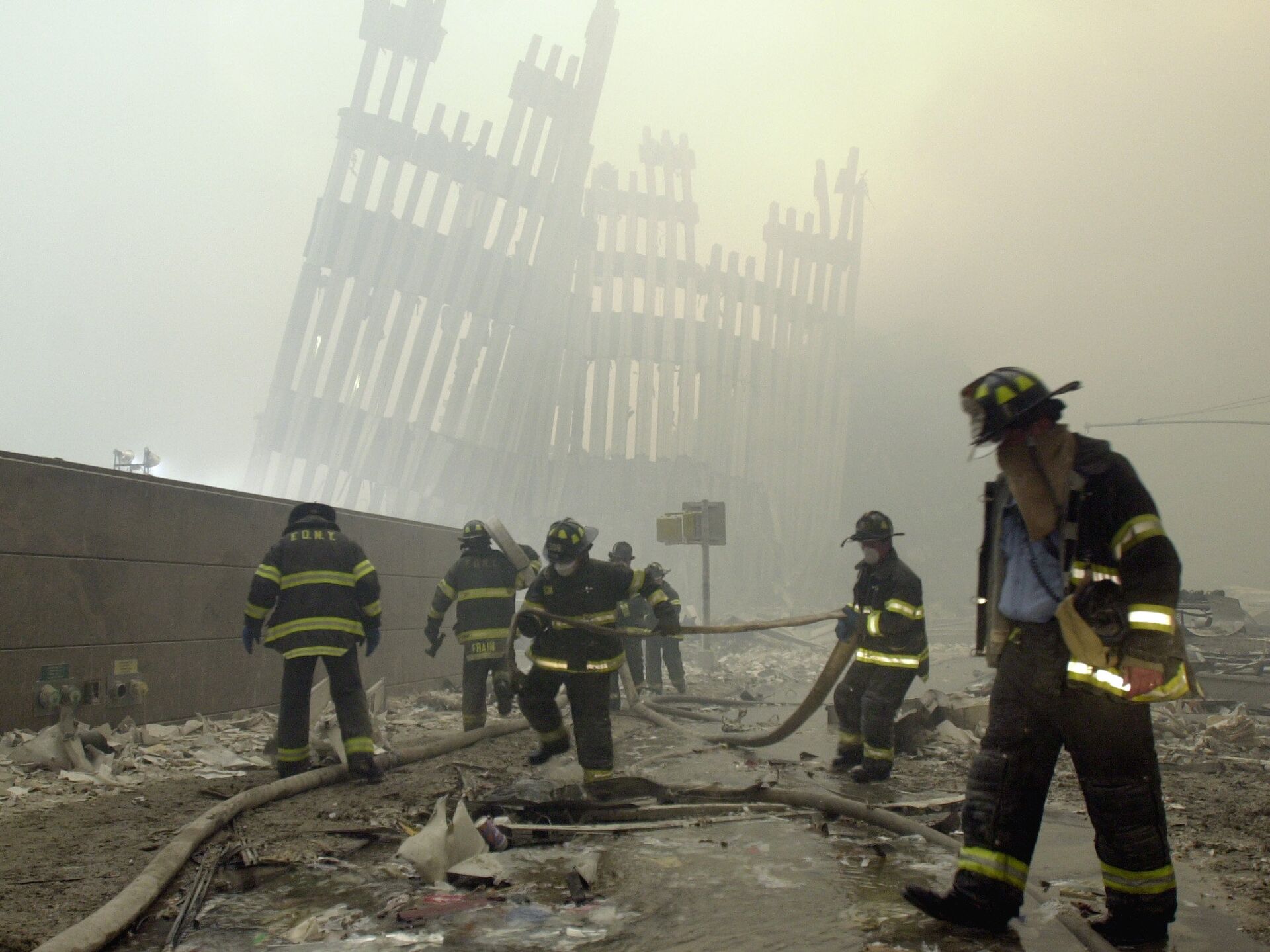
Firefighters work beneath the destroyed mullions, the vertical struts which once faced the soaring outer walls of the World Trade Center towers, after a terrorist attack on the twin towers in New York. (File)
© AP Photo / Mark Lennihan
About 3,000 people died on that day in what turned out to be the worst-ever terrorist attack in the United States. All in all, terrorists associated with al-Qaeda hijacked four planes. Two of them hit the Twin Towers. The buildings' steel was badly damaged leading to the collapse of the South Tower at 9:59am and the North Tower at 10:28am. Meanwhile, at 9:37am a third plane hit the west wall of the Pentagon in Arlington, and a fourth one crashed into a field near Shanksville, Pennsylvania at 10:03am. Years later, the the 9/11 Commission concluded that a group of passengers managed to stop the terrorists from attacking their target, which could presumably have been the White House or the US Congress.
More than 2,700 people were killed in New York City alone. It took a lot of time and effort to identify victims' remains. According to The New York Times, forensic scientists had to test more than 22,000 body parts – some no bigger than a Tic Tac – recovered from the World Trade Center site.
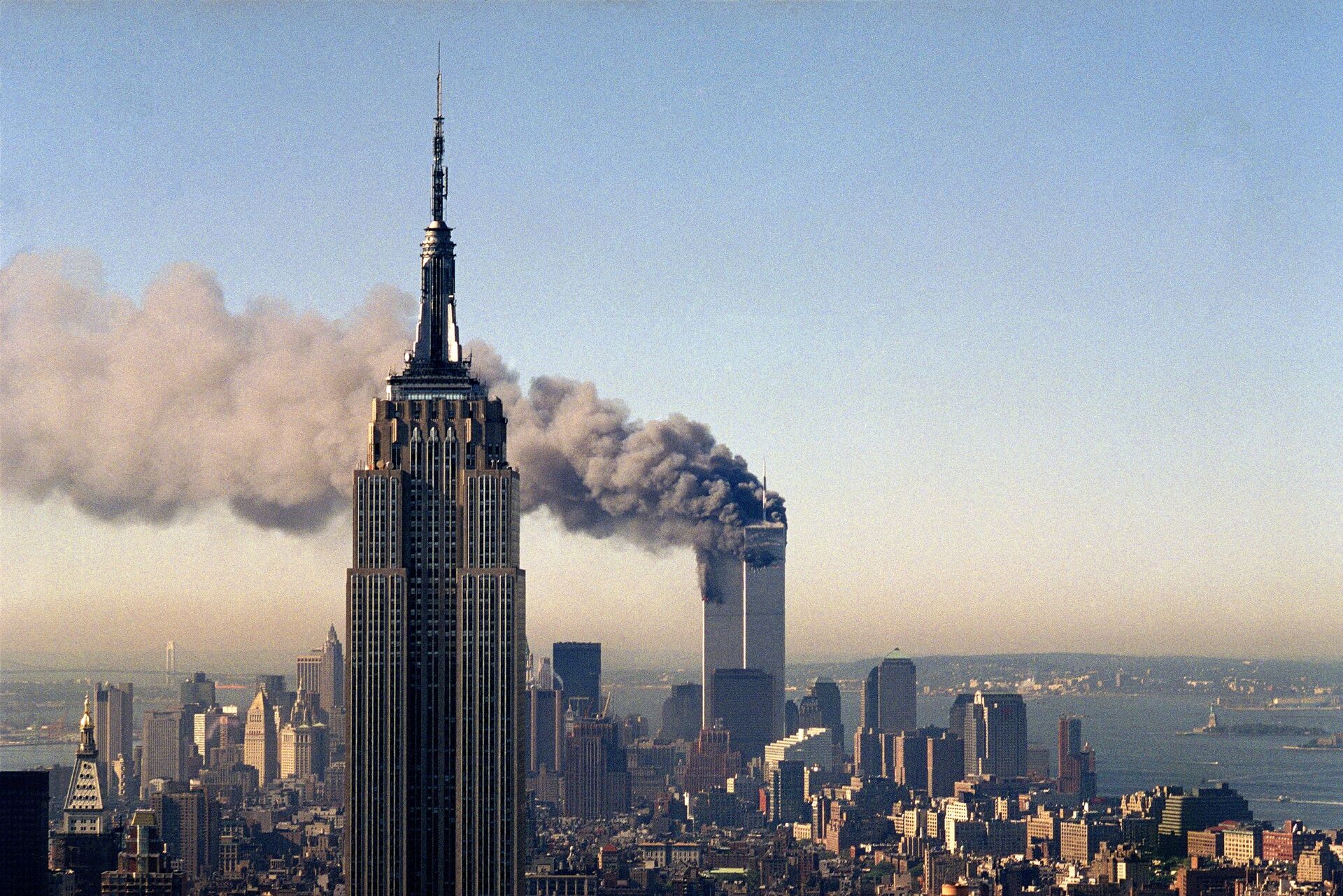
In this Sept. 11, 2001, file photo, the twin towers of the World Trade Center burn behind the Empire State Building in New York.
© AP Photo / Marty Lederhandler
Looking back at 11 September 2001, Amira says: "I would hope that the 9/11 events are a constant reminder of what can happen, what would happen if we let out guard down. Let's hope in the future - at least in our lifetime - that that's the single largest terrorist event on US soil."
However, he does not believe that the US achieved its goals in Afghanistan, which was invaded in retaliation for the terror attack immediately after 9/11. "Yes, we were after the Taliban*, but really we were going after al-Qaeda. We were going after training grounds for terrorist groups that were attacking the United States and our allies abroad," he says. However, although US troops had yet to complete their withdrawal last month, Daesh-K* brazenly attacked the Americans and Afghans at Kabul airport. The suicide bombing attack claimed the lives of 13 US military servicemen.
"I think it was the worst US military death toll for the past 10 years, so we're not even out of the country yet and they're already performing terrorist acts on us," the 9/11 survivor concludes.
*Al-Qaeda, the Taliban and Daesh-K (ISIS-K) are terrorist organisations banned in Russia and many other states.

